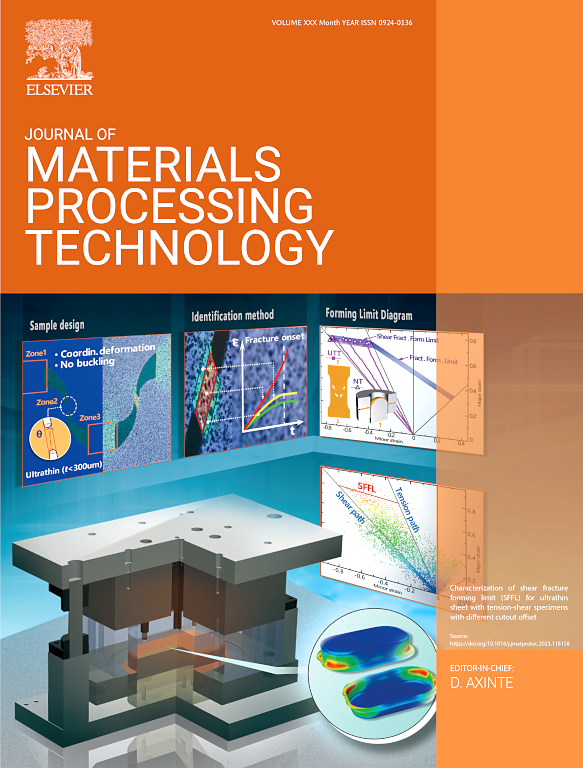Bridging behavior of molten pool and its effect on defects formation in ultra-thin sheets edge welding by micro-plasma arc
IF 6.7
2区 材料科学
Q1 ENGINEERING, INDUSTRIAL
Journal of Materials Processing Technology
Pub Date : 2025-02-01
DOI:10.1016/j.jmatprotec.2024.118696
引用次数: 0
Abstract
The molten pool behavior and weld formation in ultra-thin (thickness ≤ 0.3 mm) sheets edge welding is extremely sensitive to the variation of thermodynamic conditions, due to its unique heat transfer conditions and molten pool dynamics caused by special joint form and extremely small molten pool size. In this paper, micro-plasma arc source was applied to join the edge joint composed of two 0.12 mm thickness 304 stainless steel diaphragms. The typical molten pool bridging behavior was observed by a high-speed microphotography system. In addition, the formation mechanism of lack of fusion (LOF) defects was analyzed. The experimental results showed that common disturbances could affect the continuity and symmetry of melting process. Due to the instability raised by this melting process, the liquid bridge fails to form or to maintain, which is the major cause for undesirable weld and defects. Unlike sound weld formation process, the molten pool behaviors in LOF defects formation process could be classified into three states: temporarily discontinuous bridging (TDB), cyclically discontinuous bridging (CDB), and not only cyclically discontinuous but asymmetric bridging (CDAB). Comparing the TDB state, the backflow of molten pool under the CDB state tends to be more intense, leading to the occurrence of defects in succession. During the CDAB process, the molten pool is subject to lateral misalignment due to the gravitational component, resulting in asymmetric weld with defects. This study offers a comprehensive insight into molten pool behavior and weld formation process, which can enhance the understanding of ultra-thin sheets edge welding.
求助全文
约1分钟内获得全文
求助全文
来源期刊

Journal of Materials Processing Technology
工程技术-材料科学:综合
CiteScore
12.60
自引率
4.80%
发文量
403
审稿时长
29 days
期刊介绍:
The Journal of Materials Processing Technology covers the processing techniques used in manufacturing components from metals and other materials. The journal aims to publish full research papers of original, significant and rigorous work and so to contribute to increased production efficiency and improved component performance.
Areas of interest to the journal include:
• Casting, forming and machining
• Additive processing and joining technologies
• The evolution of material properties under the specific conditions met in manufacturing processes
• Surface engineering when it relates specifically to a manufacturing process
• Design and behavior of equipment and tools.
 求助内容:
求助内容: 应助结果提醒方式:
应助结果提醒方式:


